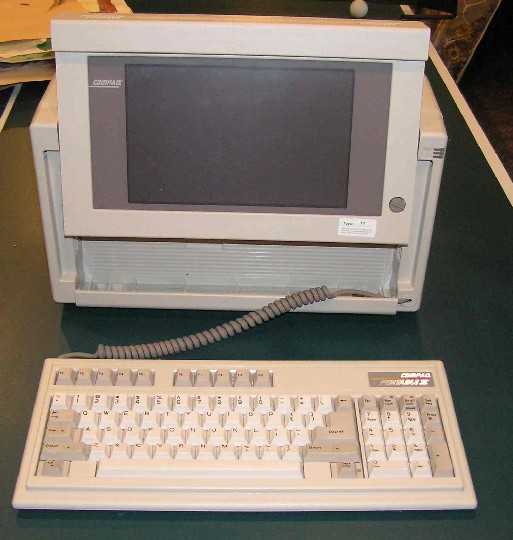





|
MANUFACTURER |
Compaq Computer Corporation |
|
MODEL |
Portable III |
|
PROCESSOR / CLOCK |
80286@12Mhz. |
|
RAM INSTALLED / MAX |
640k / 2048k |
|
STORAGE |
1x1.2Mb FDD, 1x20Mb HD |
|
OS |
MS-DOS 3.31 |
|
BUS |
Proprietary |
|
DISPLAY |
Orange Plasma monochrome (CGA resolution) |
|
YEAR INTRODUCED |
1989 |
|
COMMENTS |
Neat pop-up display. Lunch-box design |
|
Compaq Portable III
"Lunchbox"
|
|
Compaq Portable III |
|
version at $349. Compaq was a top-flight computer and the price was a little steep even for that time.
Prices listed were in effect in 1988.
|
